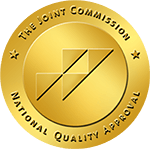The opioid epidemic has caused terrible consequences to individuals and their loved ones for many years now. From 1999 to 2019, approximately 840,000 Americans died from a drug overdose. Over 70% of those deaths involved opioid prescription drugs, synthetic opioids, or heroin. For those dealing with an addiction to opioids, effective and lasting treatment to help combat the Colorado opioid crisis is available in Denver.
How the National and Colorado Opioid Crisis Began
The late 1990s saw pharmaceutical companies offering reassurance to the medical community that opioid pain relievers did not present a real risk of addiction. Healthcare providers began to prescribe opioids at a high rate, which quickly led to people abusing them and developing addictions. Coupled with people who abuse opioids in the form of heroin and synthetic opioids like fentanyl, the opioid crisis swept the country. Unfortunately, by the time pharmaceutical companies admitted that prescription opioids were dangerous, the nation was already in the grip of an epidemic.
Where Do People Get Prescription Opioids?
People commonly assume that drug dealers provide the largest amount of illegally obtained prescription opioids. In fact, less than 10% of these types of drugs are gotten that way. Approximately 50% of users get prescription opioids from friends and relatives. Another 25% get them from physicians who prescribe them.
Of those who obtain opioids from a doctor, most receive them from a single physician. Others engage in the act of doctor shopping, which involves seeing multiple doctors in order to obtain several prescriptions. All of these methods contribute to the Colorado opioid crisis that has a stranglehold on the state.
Pharmaceutical Companies Influence on the Colorado Opioid Crisis

Once it became clear that some pharmaceutical companies were complacent in trying to cover up the damage done by their products, legal action was inevitable. In 2020, opioid manufacturer Purdue Pharma pleaded guilty in federal court in Newark, New Jersey, to three felony offenses. These offenses include one count of dual-object conspiracy to defraud the U.S. and violate the Food, Drug, and Cosmetic Act, as well as two counts of conspiracy to violate the Federal Anti-Kickback Statute.
Other lawsuits have wound their way through the courts, with one of the prevailing accusations detailing that the drug manufacturers knew the risks of addiction and glossed over them. Pharmaceutical companies have been accused of misleading physicians and even encouraging over prescribing pills. While not all manufacturers of opioid medications are guilty of contributing to the problem, plenty of damage has been done.
The Role of Doctors in the Opioid Crisis
When trying to understand how the national and Colorado opioid crisis took hold, people understandably take a look at doctors. A movement endorsed by professional organizations, including the former American Pain Society, instituted the idea of viewing pain as the “fifth vital sign”. The goal was to highlight the need for improved pain management, and many doctors were brought on board in support of this ideology.
With the reassurance from pharmaceutical companies that opioid prescriptions didn’t need monitoring to avoid patients developing addictions, the number of prescriptions increased. While blame for the opioid crisis cannot be laid at the feet of just one group, the argument can be made that some doctors bear some responsibility for overprescribing opioids.
Medical Training for Pain Relief
All types of doctors encounter patients dealing with pain – general practitioners, sports medicine doctors, ENTs, endocrinologists, and more. However, pain management doesn’t fall under one single specialty. Because of this, doctors often receive minimal training on how to manage chronic pain.
Pain management is most extensively taught in anesthesiology departments. While anesthesiologists do know how to manage acute pain related to traumatic injury or surgery, they have little knowledge of how to manage chronic pain. They also tend to receive less training in oral analgesics, substance abuse, and addiction than other doctors.
There is also a strong psychological component to pain, which means that psychologically-based treatments can effectively complement physical treatment. Psychiatrists, who can prescribe drugs, receive some training in opioid use disorders. However, many argue they could benefit from increased and updated education and training.
The FDA’s Response to the Opioid Crisis
In 2012, in response to the growing opioid problem, the FDA established rules requiring manufacturers of painkillers to provide continuing education to physicians. The rules also required the development of medication guides to help patients understand the drugs’ risks, and report on the access patients have to drugs.
The problem with this response lies in how the FDA allowed the pharmaceutical companies to create the curriculums. The education itself was voluntary, and reports about what the manufacturers found out were not forwarded to the FDA.
The Devastating Effects of the Opioid Crisis
The combination of reasons opioid abuse became widespread plays heavily into the Colorado opioid crisis and the damage done to the community. In 2017, Acting Health and Human Services (HHS) Secretary Eric D. Hargan declared a nationwide public health emergency regarding the opioid crisis. At this point, more than 140 Americans were dying from drug overdoses daily, with 91 of those being opioid overdoses.
Other alarming statistics from 2019 and 2020 that showcase the devastating effects of the opioid crisis include:
- 1.6 million people had an opioid use disorder in the past year
- 745,000 people used heroin in the past year
- 1.6 million people misused prescription pain relievers for the first time
- 10.1 million people misused prescription opioids in the past year
- 50,000 people used heroin for the first time
- 14,480 people overdosed on heroin
 The Colorado Opioid Crisis
The Colorado Opioid Crisis
The Colorado opioid crisis stretches across the state, disrupting the lives and health of many who become lost in their addictions. Colorado healthcare providers wrote 45.1 opioid prescriptions for every 100 persons. In 2018, 564 overdose deaths involving opioids were reported statewide. There were 268 deaths involving prescription opioids, 233 involving heroin, and 134 involving synthetic opioids other than methadone.
Opioids and other drugs used by injecting needles have taken their toll on Colorado, too. In 2017, 15.2% of new HIV diagnoses in males were due to injection drug use (IDU) or a combination of IDU and male-to-male sexual contact. For women, the number was 17.1%. Of the 12,352 people already living with HIV that same year, 17.7% of men contracted it due to IDU or a combination of IDU and male-to-male sexual contact. For women, the number was 23.8%.
Opioid Crisis Help in Denver
Getting help for opioid addiction involves finding a treatment program that understands how to implement a full approach to recovery. The staff should be trained to recognize the psychological components of pain, guide their clients in understanding the source of their addictive behaviors, and help them find ways to avoid relapse.
The Colorado opioid crisis can also be positively impacted when people in treatment learn to rely on safer, less addictive medications. Holistic therapies provide an effective way to round out the treatment of opioid disorders. Many pain patients respond well to acupuncture, massage therapy, and exercise — often finding these types of therapy reduce their pain levels.
Treatment for opioid addiction begins with a detoxification program, which rids the body of addictive substances. Completing detox allows a person to enter the recovery process in a neutral drug-free state. For some, this involves residential programming in which they live full-time in a facility while receiving treatment. For many, treatment can be completed using outpatient programs. These types of programs allow a person to receive treatment during the day while still returning home at night.
Opioid Addiction Treatment in Denver, CO
If you or someone you love has an opioid addiction, help is available. Continuum Recovery Center of Colorado provides holistic outpatient addiction treatment in Denver. We help people put their addiction in the past and find better ways to manage their pain. Our programs provide treatment for substance use disorders and any accompanying mental health issues. Contact us today to learn more about how we can help change your life.




